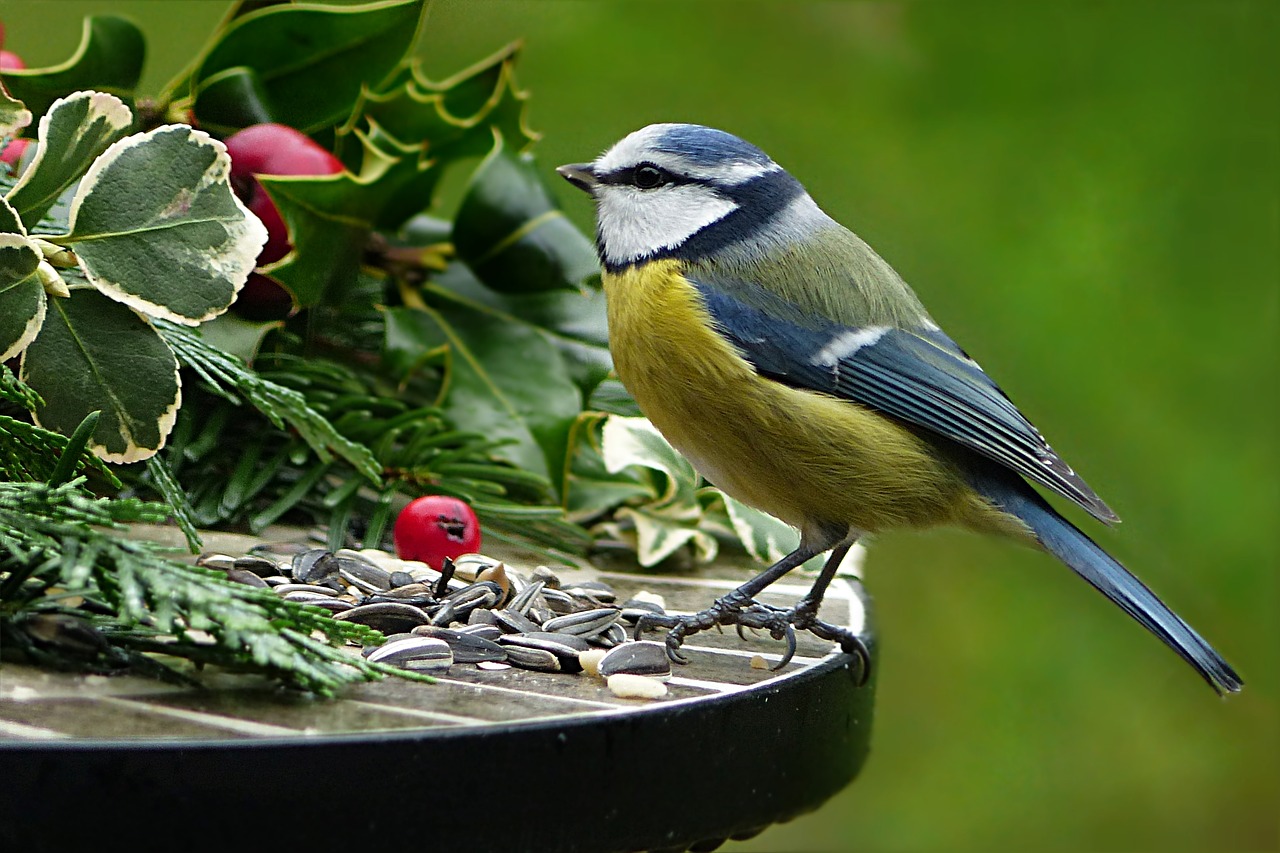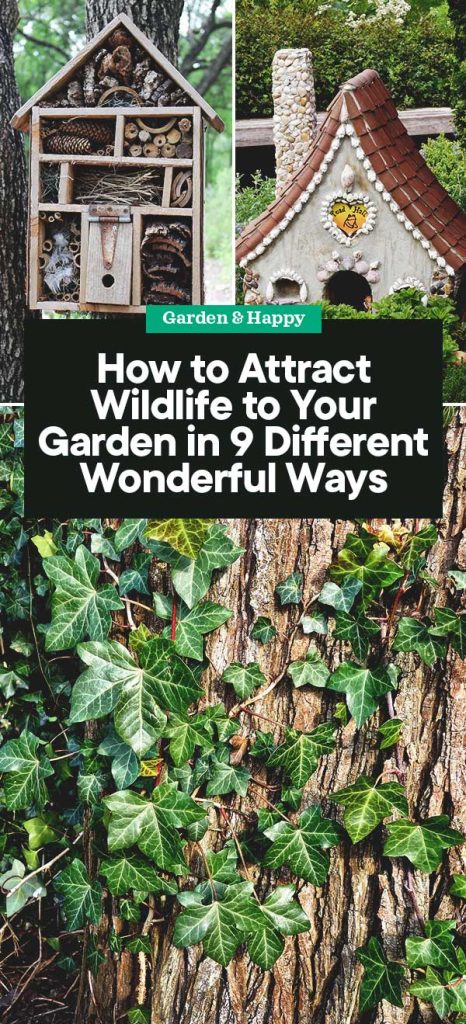

Attract wildlife to your garden: Creating a haven for nature is a fantastic way to enhance your outdoor space and connect with the natural world. Imagine a backyard buzzing with activity, filled with birdsong, butterflies fluttering among vibrant blossoms, and maybe even a playful squirrel scurrying up a tree. This isn’t a fantasy; it’s achievable! Creating an appealing and inviting environment for wildlife is more manageable than you think! This article will guide you through the key steps, from choosing the right plants to setting up the perfect habitats for birds, insects, and small animals. We’ll explore various strategies for creating a truly thriving ecosystem right in your backyard.
Choosing the Right Plants for Wildlife
Native Plants are Key
Native plants are ideal for attracting local wildlife. They provide essential food and shelter tailored to the needs of native birds, insects, and small mammals. Native plants often have evolved with local wildlife over generations, providing critical nutrients and structures for survival. They’re well-adapted to the local climate and soil conditions, requiring less maintenance and support. They are also usually more resilient to pests and diseases, furthering their ability to thrive and attract the diverse species of wildlife you wish to see. Researching the specific needs of the wildlife in your area will aid in selection and maximize your garden’s appeal.
Variety is the Spice of Life
Don’t settle for a monotonous garden; instead, create an environment with a variety of plants. Offer nectar-rich flowers for hummingbirds and butterflies, berry-producing shrubs for birds, and seeds for birds and small animals. Different plants attract different types of wildlife; understanding what each creature needs will help you select specific species.
Plant Selection by Season
Consider plants that flower throughout the year or bloom during the periods when specific wildlife may be particularly active or need specific nourishment. A mix of foliage, flowers, fruits, and seeds will appeal to a greater diversity of visitors. Researching the specific needs of the animals you’re trying to attract, taking into consideration the types of nourishment they need, will result in a much more attractive and valuable garden environment.
Planting Considerations
When planting, consider the needs of different species, such as the space requirements of larger animals. Ensure that there are enough open spaces for wildlife movement and that shrubs and trees offer safe havens for resting or nesting. Proper spacing and planning will be integral in creating a flourishing ecosystem in your garden.
Providing Essential Resources
Water Sources are Crucial
A constant supply of fresh water is essential for attracting and supporting wildlife. A birdbath or small pond can provide vital drinking water and a place to bathe. Providing water is one of the most important steps in attracting wildlife. Consider how different types of wildlife use water, from drinking to bathing, in addition to the types of water sources they prefer; this will allow you to choose the best method for supplying the water they need.
Food for Thought
Wildlife needs a reliable food source to thrive. Create a variety of food sources, such as a bird feeder, a hummingbird feeder, or a seed-filled planter. Don’t forget about the insects! Consider providing insects with accessible food sources such as fruits and berries in the garden.
Providing Shelter and Nesting Sites
Provide shelter and nesting areas for animals to roost. These include shrubs, trees, or small structures like birdhouses. The ideal structure for animal habitation depends largely on the specific needs of the species. Research what type of shelter and nesting sites are most suitable for your desired wildlife. This will maximize your ability to support and sustain the wildlife in your garden.
Creating a Safe Space
Creating a safe environment is critical for attracting wildlife. Avoid using pesticides and maintain a natural landscape to maintain the species’ safety.
Creating Habitats
Wildlife-Friendly Landscaping
Design landscaping that mimics natural habitats. This could include creating a rock garden, a meadow, or even a small woodland area for birds and other animals to find refuge.
Maintaining a Natural Landscape
Avoid using harmful chemicals, such as pesticides and herbicides. Maintaining a natural landscape will enhance wildlife’s chances to thrive in the environment.
Minimize Lawn
Consider reducing the size of your lawn. A larger lawn area offers limited appeal and support for wildlife and will likely deter the species you wish to attract.
Plant diversity
Consider native wildflowers and shrubs to support local insects and animals. Native wildflowers and shrubs typically offer the most support for attracting wildlife.
Incorporate natural elements
Incorporating natural elements, such as logs and rocks, creates ideal hideouts and shelter spots for wildlife.
Monitoring and Maintaining
Observing Wildlife
Observe the animals that frequent your garden. Observe what they eat, what kind of shelter they use, and how they interact with each other. This will give you insights into their needs, and will enable you to adapt your garden to meet their specific needs.
Adapting Your Approach
Wildlife needs vary; adapting your methods is essential to maintaining wildlife success. For example, providing nesting materials for birds during specific seasons will enhance their success in creating new nests.
Regular Maintenance
Regular maintenance is key. Clean bird baths, remove dead plants, and maintain a safe and attractive space. These steps will aid in long-term success in maintaining wildlife in the garden.
Addressing Issues
Address any wildlife problems that may arise promptly; consult experts if necessary.
Long-Term Engagement
Remember that building a wildlife-friendly garden is a long-term commitment. Be patient, observant, and adaptive, and enjoy watching the beautiful and amazing diversity of wildlife in your garden!
Fostering Healthy Ecosystems
Considering the Ecosystem
Consider the overall ecosystem and the role of the different species in maintaining balance. Understand the interdependence of various species in the ecosystem to ensure a thriving environment for everyone.
Supporting Local Wildlife
Supporting the local wildlife in your area means ensuring they have the resources they need to thrive. Provide habitat and food, and be patient as you observe and maintain the environment.
Protecting Wildlife
Understanding and protecting wildlife is paramount. Learn about the specific needs of the species in your area, whether they are migratory or permanent residents of the ecosystem.
Community Building
Engaging with Neighbors
Consider engaging with your neighbors and creating a supportive community committed to wildlife preservation.
Local Wildlife Groups
Engage with local wildlife groups for support and resources.
Resources
Identify local wildlife organizations for valuable resources.
Collaboration
Collaborating with neighbors and organizations enhances the ability to sustain wildlife for the long-term.
Conclusion
Attract Wildlife to Your Garden
Attract Wildlife to Your Garden requires effort but is worthwhile. This article provides a guide on how to attract and maintain wildlife in your own backyard.
Sustained Success
Be patient, observe, and maintain your garden; you can sustain success in attracting wildlife to your garden.
Long-Term Commitment
This is a long-term commitment; be patient, observe, and adapt.
Take the First Step
Start creating your wildlife-friendly garden today!
More Tips and Tricks for Success
Bird Feeding
Offer a variety of bird feeders, ensuring they provide a continuous and sustainable source of food for birds.
Water Provision
Ensure a constant source of fresh water is available for birds and other animals to drink and bathe in.
Shelter Options
Provide shelter options, such as birdhouses, bat houses, or small nesting areas for different animals.
Reduce Pesticides
Avoid using harmful pesticides or herbicides that can harm wildlife.
Additional Considerations
Seasonal Variation
Be mindful that wildlife needs vary with the seasons. Adjust your garden accordingly, ensuring you are providing appropriate food, water, and shelter.
Local Needs
Research the specific wildlife in your area and understand their needs. This will guide you in crafting a garden suitable for the local wildlife.
Community Engagement
Engage with your local community to promote awareness and support for wildlife preservation initiatives in your area. You can share knowledge and work together to create a more sustainable environment for all.
Observing and Adapting
Wildlife will adjust their habits based on seasonal variations, habitat changes, and resources available in the environment; be mindful of these variations, and adapt your garden strategies as needed.
Frequently Asked Questions
How long will it take to see wildlife in my garden?
Attracting wildlife to your garden is a process that takes time and patience. Results vary depending on the species and the environment you create. Be patient; consistency is key. While some birds might show up soon, establishing a regular presence often takes a few weeks, or even months, depending on the animals, season, and their natural behaviors. Observe your garden regularly and you’ll likely start seeing visitors, gradually and incrementally. Don’t get discouraged if you don’t see immediate results; keep providing a supportive environment, and wildlife will eventually come.
What kind of plants are best for attracting wildlife?
Choosing the right plants is crucial for attracting wildlife to your garden. Native plants are particularly beneficial, as they often provide essential food and shelter for local birds, insects, and small mammals. Consider a variety of flowering plants and shrubs, and also incorporate trees with berries or seeds. Include nectar-rich flowers for hummingbirds and butterflies. Look for plants that have the specific nutritional requirements for various animals, like specific types of berries for birds and certain flowers for insects. Researching specific animal preferences can maximize the success of your efforts.
Can I attract specific types of wildlife?
Yes, you can create a garden that’s more attractive to certain types of wildlife! By meticulously planning your garden design and choosing plant species suitable for their needs, you can increase the chances of attracting particular creatures. If you focus on native plants known to support specific birds, insects, or small animals, you’ll increase the chances of them visiting. For example, certain flowering plants are exceptionally attractive to butterflies, while berry-producing shrubs attract birds. Researching the specific diet and habitat preferences of the animals you’re interested in will help tailor your garden to their needs. With a little planning, you can create a truly specialized haven for your chosen type of wildlife.
In conclusion, attracting wildlife to your garden is a rewarding endeavor that fosters a deeper connection with nature. By carefully selecting plants, providing water sources, and creating safe havens, you can transform your outdoor space into a vibrant ecosystem. Remember to observe and adapt, as different species have unique needs. Implement the steps outlined in this guide, and soon you’ll be welcoming a diverse range of avian and animal friends into your garden, celebrating the beauty of nature right in your backyard. Ready to start? Visit our website for more tips and inspiration!